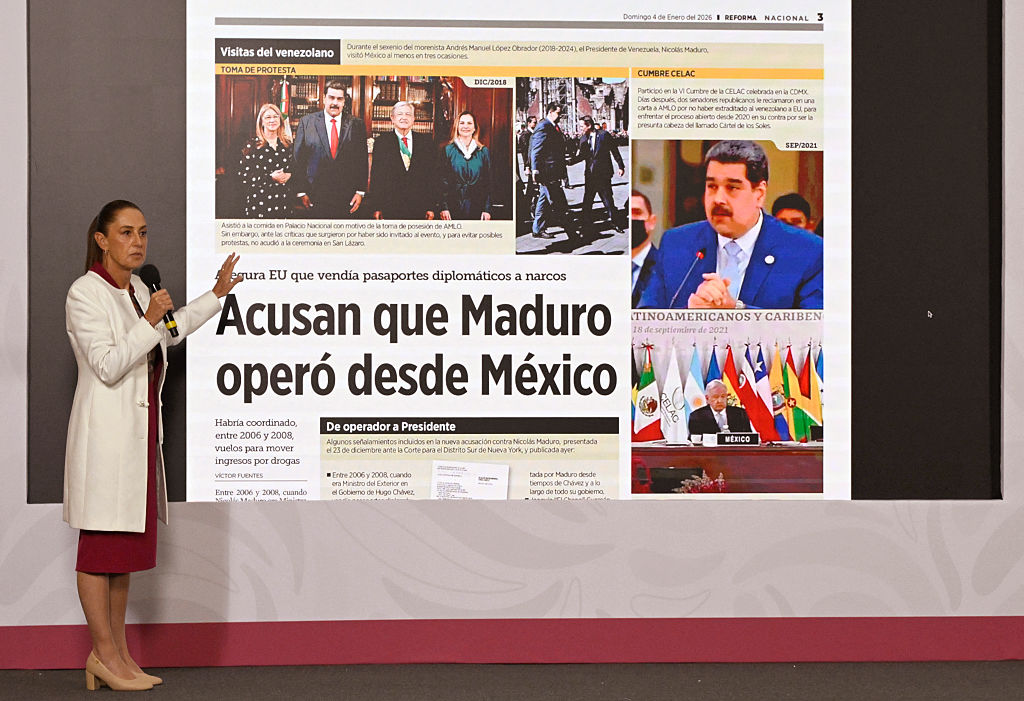Protecting Mexico's Vulnerable Groups in Today's Security Context
Protecting Mexico's Vulnerable Groups in Today's Security Context
This AS/COA roundtable sought to raise awareness of the security challenges faced by human rights groups, migrants, and journalists in Mexico and steps to address their safety.
Opening Remarks:
- Alexandra Délano, Assistant Professor of Global Studies, The New School University
Panelists:
- Sergio Aguayo, Professor, Center for International Studies, El Colegio de México; Columnist, Reforma newspaper
- Michele Klein Solomon, Permanent Observer to the UN, International Organization for Migration
- Carlos Lauría, Senior Americas Program Coordinator, Committee to Protect Journalists
- Moderator: Jason Marczak, Director of Policy, Americas Society and Council of the Americas
Summary
Speakers at this roundtable discussion sought to raise awareness of the security challenges faced by human rights groups, migrants, and journalists in Mexico and steps to address their safety. Going beyond the headlines that dominate coverage of the Mexico security situation, this discussion looked more specifically at the future of the security policy and how that will likely affect some of Mexico’s most vulnerable groups.
Grim Statistics
Kicking off the discussion, Jason Marczak noted that there have been, on average, 300 recorded murders per week in Mexico in the first five months of 2011. The actual, unreported figure is likely much higher. In the last five years, more than 40,000 people have disappeared or been murdered, according to Sergio Aguayo. Those affected by the violence often include members of vulnerable groups such as journalists, with ten killed in 2010 and hundreds more threatened. Carlos Lauría cautioned: “Mexico is becoming one of the most murderous countries in the world for the press.”
Implications for Journalism
The tenuous situation in Mexico—especially in the northern and southern states that bear the brunt of the largest flows in arms and drugs—has led to a dangerous environment for journalists. Fearing for their safety, journalists are increasingly turning to self-censorship, which is then limiting their basic right to freedom of expression. By limiting coverage, journalists are also prevented from informing the Mexican public of events. The implications are most acutely seen in the inability to carry out longer, investigative pieces that go beyond the headlines.
Another unsettling fact is the Committee to Protect Journalists finding that 90 percent of perpetrators escape any form of retribution. While Mexican President Felipe Calderón has pledged to make violation of freedom of expression a federal offense, Lauría noted that no real progress has been made.
Implications for Migration
At the end of May, President Calderón signed into law the new Migration Law, which is intended to better protect migrants in the country through new efforts such as eliminating prison sentences for unauthorized migrants and punishing migration authorities for any unlawful acts committed toward migrants.
Mexico’s southern border has become a major transit area in the last 15 years for citizens of Central American countries and from Asia seeking to enter the United States and Canada. The National Migration Institute of Mexico estimates that roughly 150,000 people cross Mexico’s southern border annually; civil society groups place the number much higher. Klein Solomon mentioned that cartels frequently kidnap migrants and extort them for money or sexual favors, killing those who do not comply. Mexico’s National Human Rights Commission estimates that 22,000 migrants are kidnapped annually. Criminals are rarely held accountable because families of the kidnapped are afraid to speak out.
How to Protect These Groups in the Future
The security context can only be improved through multiple stakeholders looking past divisions and coming up with new ways to minimize the violence. Aguayo emphasized that the Calderón administration should do more to prioritize Mexican lives. One of the challenges is that the federal government is unwilling to change course as that would effectively admit that earlier efforts had not succeeded. He also called on greater action from the United States; a U.S. Senate report released in June 2011 found that some 70 percent of firearms recovered from Mexican crime scenes in 2009 and 2010 and submitted for tracing came from the United States. The U.S. demand for narcotics must also be addressed, as that demand is what is fueling the violence in Mexico.
Mexican civil society can play a key role in combating the violence, particularly through organizing effective campaigns and demonstrations as Alexandra Délano noted. One example of the latter is Aguayo’s mention of how groups were able to mobilize 150,000 people in a rally last month in Mexico City to call for an end the war on drugs. In addition, echoing a recent post on AQ Online, Lauría commented that social media such as Facebook and Twitter have filled an information vacuum for citizens, especially in northern Mexican states like Tamaulipas and Chihuahua. Though the risk of spreading false information exists, Lauría said social media offers a glimmer of hope in Mexico because the security information it can provide anonymously and en masse serves the public interest.








